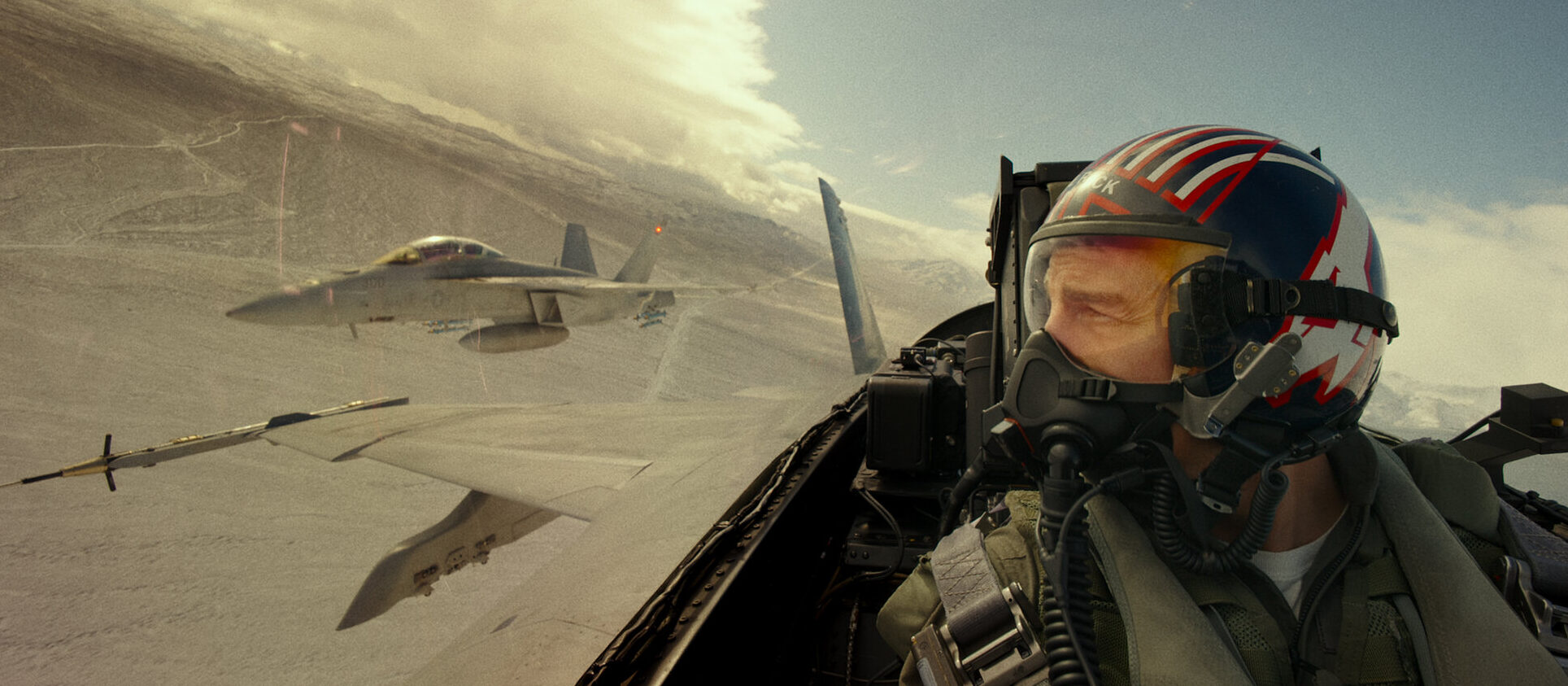

“This makes time your greatest adversary.”
No one—and by no one I mean, at the very least, neither me, nor myself, nor I—was clamoring for a sequel to Top Gun, a film with a scenario and characters so thin it was considered a Navy recruitment commercial by prominent critics. But nostalgia sells and studios want to make money, and in an era where Harrison Ford still plays Han Solo, Indiana Jones, and Rick Deckard to the tune of hundreds of millions of buckaroos, Top Gun: Maverick just about makes sense, doesn’t it? Amazingly, not only is it way better than the original (a low bar to clear), but it is better than anyone could have reasonably expected—an assured, tactile, legible action movie that doesn’t feel the need to cower behind a shield of irony. On the contrary, it is absolutely thrilled to revel in its unchecked spectacle, sentiment, and macho camaraderie. It’s so good that it almost retroactively imbues the original with legitimate substance!
Tom Cruise reprises his role as Captain Pete “Maverick” Mitchell, a lifelong adrenaline junkie who never achieved the rank he deserves because he’s just too much of a fun-loving rule breaker to keep his nose clean and climb the ladder. Or maybe it’s just what he wants. Called back into the Top Gun program by his former rival Ice Man (Val Kilmer, given a corny but effective cameo), he finds himself surrounded by both sweet reminders of past glories and dire portents. A second-chance romance with Penny (Jennifer Connelly) affords him a chance to show off on his crotch rocket and work his charisma like the olden days, while an impossible mission (heh) gives him the opportunity to prove that he’s still got a few laps left in the tank. Most crucially for a film built around such flimsy characters, Maverick is provided a shot at redemption when the shortlist for the mission includes Rooster (Miles Teller), the son of his late wingman Goose (Anthony Edwards).
The model that director Joseph Kosinski appears to be following is Star Wars: The Force Awakens: call in the aging hotshot and pair him with some young blood, model the younger characters after the types defined in the original (Glen Powell takes Kilmer’s spot as the resident jerk), mimic the premise, repurpose the 40 year old aesthetic… But where Disney seems to approach their well-loved source material with tongue-in-cheek cynicism, Maverick embraces the schmaltz without shame, maybe even with a touch of vanity. It sticks to its old school formula so faithfully, in fact, that as the film was rolled out and started raking in the dough (final gross ~$1.5B), it came to be a beacon of hope; proof positive that modern mainstream filmmaking need not be how it is; that good-natured charm, old-fashioned virtues, and a sense of physical craft can carry a blockbuster film. In a world where most big budget films are shot in rooms with green walls, Tom Cruise and his co-stars training to do stunts in real Navy fighter jets creates quite the contrast.
Like its contemporaries, Maverick is self-aware, but its self-awareness doesn’t result in awkward jokes or lame acknowledgements of itself or any of the other crippling flaws that often stem from such contemptuous writing. Rather, its screenplay aligns its star with its protagonist: the last of a dying breed and yet utterly necessary for the survival of his people. Are we speaking of Maverick and the citizens of the United States, or Tom Cruise and the popcorn movie industry? Are fighter pilots being replaced by drones or are movies being replaced by content-generating algorithms? Are we talking about the right way to fly a mission or the right way to make a blockbuster action film? That’s hyperbolic and inexact, but it allows the film to bear the weight of those lofty word-of-mouth expectations and still reach Mach 10. Anyway, Mad Max: Fury Road, Blade Runner 2049—that’s my entire list of belated sequels that are as worthy as Top Gun: Maverick.